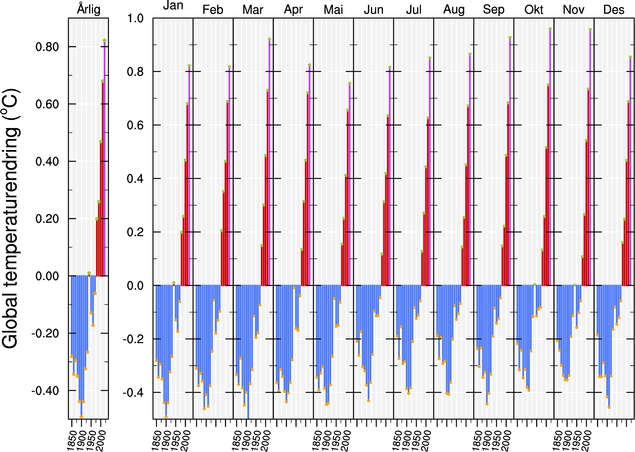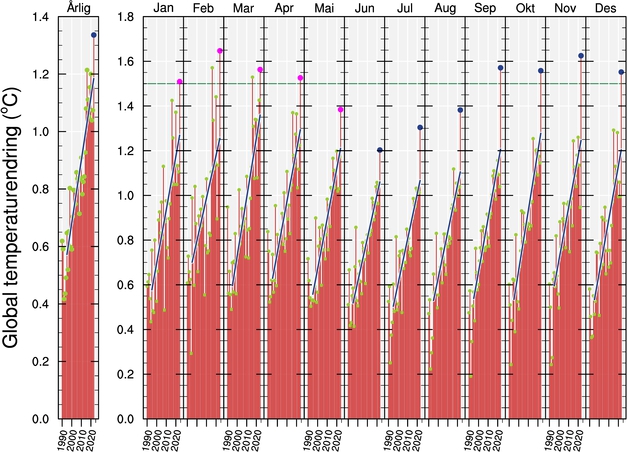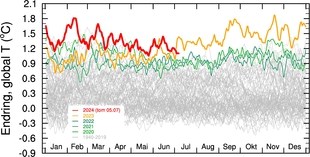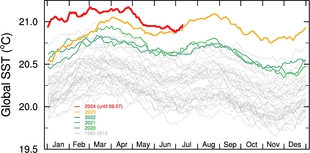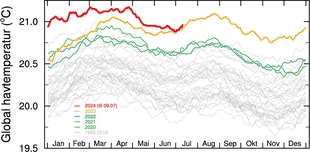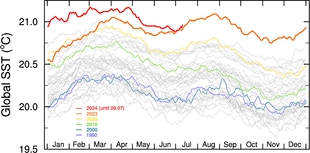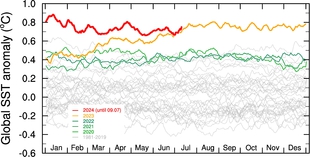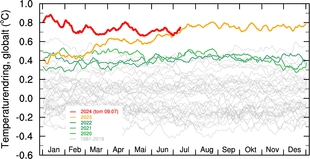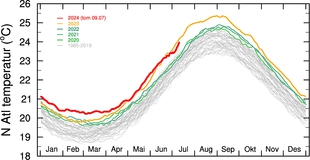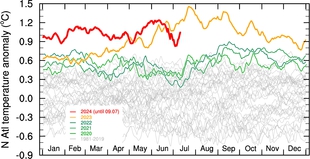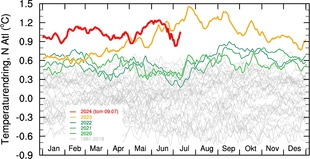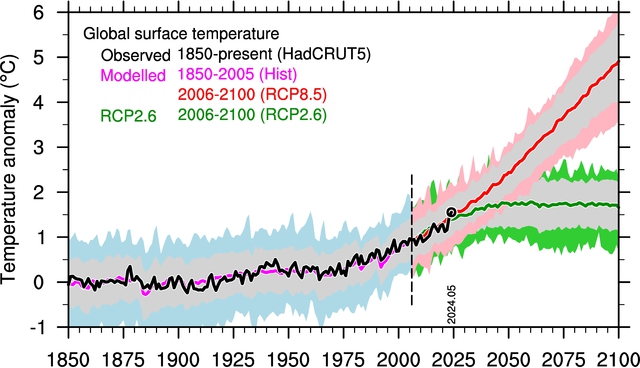Observed annual mean temperature since 1880
Annual mean global and hemispheric temperature time series until the last full year relative to the 1961-1990 mean temperature.
Analysis of surface thermometer recordings in black (mean of
GISS and
HadCRUT5) and the corresponding decadal mean values as bars.
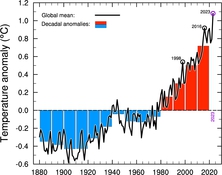

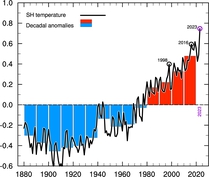
As above, but estimating the warming from preindustrial time until the last full year with data (magenta line segments). Preindustrial temperature is estimated as the average temperature during the first 50 years of data (1880-1929), the latter as the end point of the linear trend for the last 30 years.
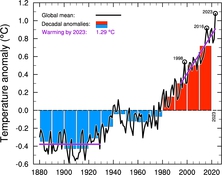

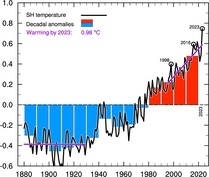
As above, but with identical range on the vertical axis (for visual comparison).
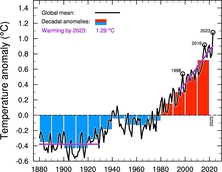
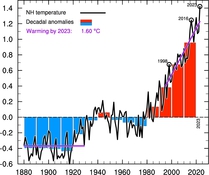
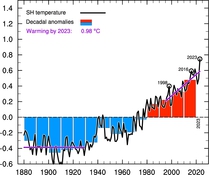
As above, but including the current year. The vertical line shows the +/- 1 standard deviation based on the temperature of the remaining months of the year, extracted from the latest 20 years.
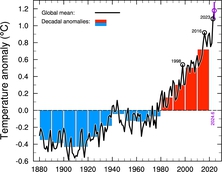
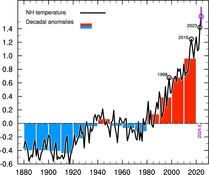
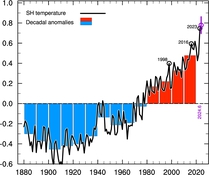
Data.
Animation of the GISS data.
Animation, duration 30 sec.
Note: Errors may occur since all figures are automatically updated with only sporadic checking.
Return to Temperature overview. Return to top of page.

